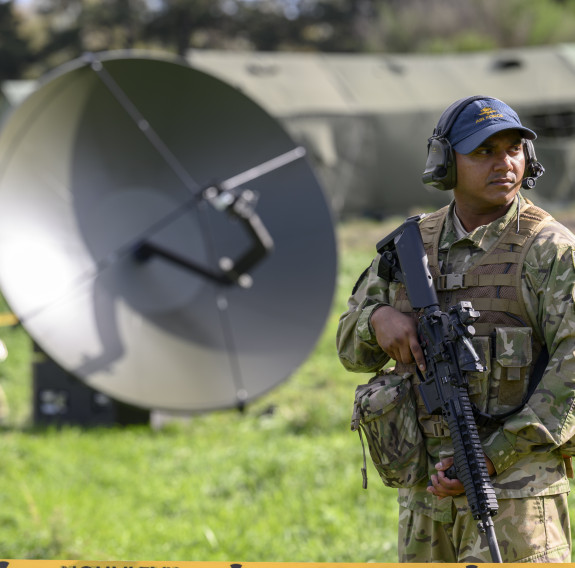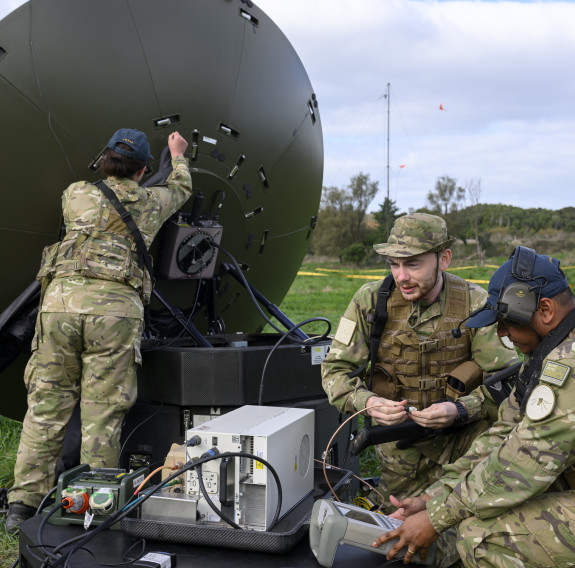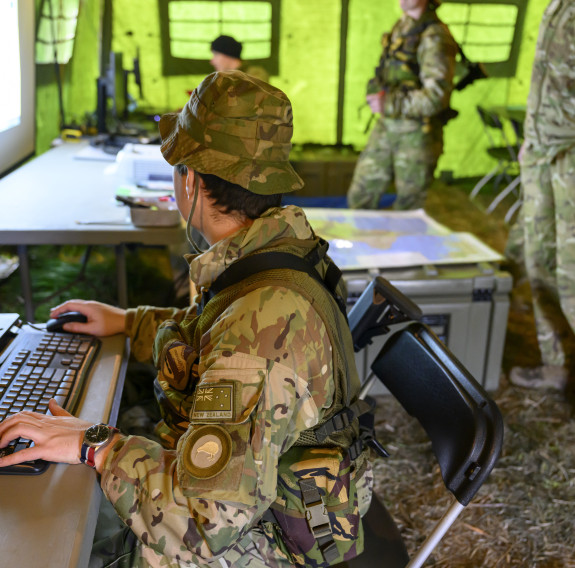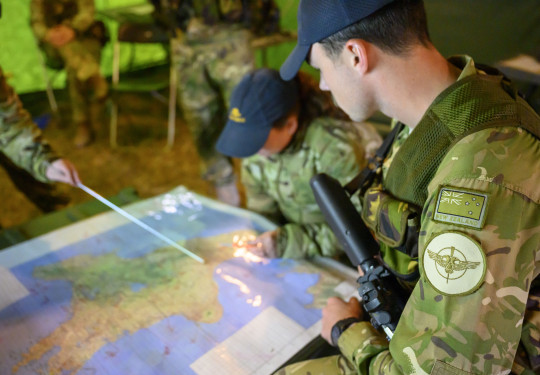RNZAF tech and intelligence teams hit the field
Communications and Information Systems (CIS), and Intelligence specialists recently took to the field, practising skills vital in warfighting and humanitarian aid and disaster relief (HADR) scenarios.
25 July, 2025
The team from Royal New Zealand Air Force (RNZAF) No. 230 Squadron is one of the backbone units that provides operational support during exercises and operations involving other squadrons.
Exercise Haast Eagle, a 10-day deployment at Linton Military Camp’s Makomako training area, allowed personnel to work on their core trade skills, No. 230 Squadron’s Training Flight Commander Squadron Leader Arianan Osborne said.
“One of the key training outcomes of Haast Eagle is for No. 230 Squadron to practice warfighting skills. This is particularly important for our CIS personnel, who operate in all environments, both remote and secure,” she said.
“They get to practise their weapons drills, including blank firing, movement under fire, and ground defence.”
For CIS technicians, the skills practiced would be used on a range of operations, from HADR to the CIS support expected to be provided in a low threat environment.
The Intelligence team exercised tactical intelligence support to rotary wing and fixed wing aircraft.
“The team was focussed on providing tactical intelligence, which concentrated on pre-mission briefs for simulated fixed-wing and rotary-wing assets in a simulated deployed threat environment.
“They also provided regular command update briefs to the mission commander about the developing situation.”
No. 230 Squadron deployed a Pinzgauer Light Operational Vehicle for the exercise. It holds a communications suite that enables CIS Technicians to establish a communications hub for a forward operating base in a simulated threat environment.
“This required ground defence considerations to be made, which enabled them to not only practice their communications skills, but also their camouflage netting, weapons handling and contact drills.”

No. 230 Squadron personnel deployed on Exercise Haast Eagle

No. 230 Squadron personnel deployed on Exercise Haast Eagle

No. 230 Squadron personnel deployed on Exercise Haast Eagle
The weather provided the team with unique challenges, including cloud and rain impacting some of the CIS systems, she said.
“This provided excellent training opportunities and challenges for the CIS team to ensure the networks were provisioned – sometimes in ways that required creative ‘outside the box’ solutions.”
The deployment wouldn’t have been possible without the support of the logistics personnel embedded within the squadron, who helped during the pre-deployment and re-deployment phases, SQNLDR Osborne added.
“They ensured the team had the equipment and spares they needed to deploy essential systems required for the success of the exercise.”
Alongside the squadron personnel, an all-Air Cyber Operations team also successfully exercised defensive operations, which were aligned to the Haast Eagle objectives.
“This was the first time that a cyber operations team deployed with a No. 230 Squadron exercise. Significantly, this was also the first time all cyber personnel were from the RNZAF. This demonstrated a great development in the RNZAF’s cyber capability.”
